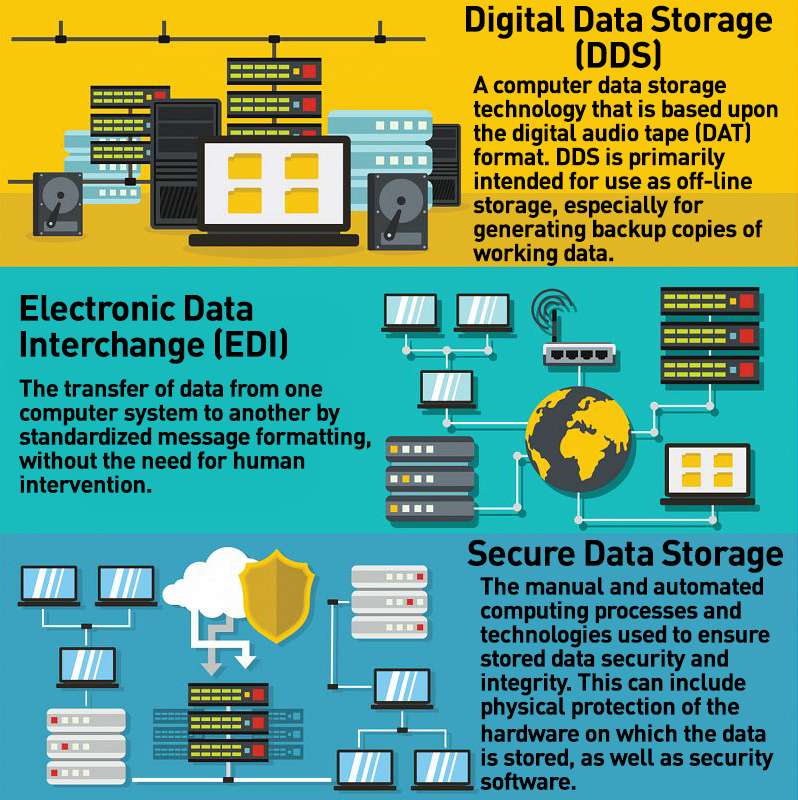Leading Tips for Ensuring Secure Data Destruction in Your Cyber Security Plan
The Importance of Effective Information Destruction Practices in Shielding Sensitive Details and Ensuring Computer Protection
In an age where information breaches are progressively common, the relevance of efficient information destruction methods can not be overstated. Applying durable data damage methods not just mitigates these dangers but additionally straightens with lawful conformity requirements, guaranteeing that companies promote their track record and foster client depend on.
Understanding Data Damage
Recognizing information destruction is essential in today's electronic landscape, where sensitive details can easily be jeopardized. Efficient information devastation involves not just ensuring but erasing files that data is irretrievable with thorough approaches. This procedure is important for organizations that manage personal customer information, copyright, or interior papers, as any kind of violation can bring about serious economic and reputational effects.
Information damage includes different methods, including shredding physical media, degaussing magnetic storage gadgets, and employing software-based services that overwrite data multiple times. Each approach offers a details objective and has to align with the level of sensitivity of the information being disposed of. As an example, physical devastation is usually liked for tough drives consisting of highly confidential data, while software application methods may be sufficient for much less delicate info.
Furthermore, sticking to sector criteria and laws, such as the General Data Protection Guideline (GDPR) or the Medical Insurance Mobility and Liability Act (HIPAA), is vital for compliance and to alleviate lawful dangers. Organizations must develop a robust data devastation policy, train staff members on finest practices, and regularly investigate their treatments to ensure that all delicate details is disposed of firmly and efficiently.
Risks of Inadequate Practices
Insufficient information destruction practices expose companies to substantial threats that can have significant consequences. When sensitive info is not properly taken care of, it continues to be vulnerable to unauthorized gain access to, which can bring about data breaches and identification theft. Such incidents not only endanger the safety and security of individuals but additionally tarnish the organization's credibility, leading to a loss of consumer count on and prospective financial repercussions.
In addition, regulative conformity is progressively stringent in several sectors. Failing to stick to data devastation laws can result in substantial fines and lawsuits versus companies. These fines can strain funds and draw away interest from core business procedures.
Additionally, the misuse of recurring information can cause intellectual residential or commercial property burglary or company reconnaissance, threatening affordable benefits (data destruction). The impact of poor data devastation prolongs beyond immediate monetary losses; it can also result in long-lasting damages to brand stability and market setting

Organizations must recognize that information safety is not solely about preventing violations; it likewise encompasses the accountable monitoring of information throughout its lifecycle. Ignoring effective information devastation procedures can have disastrous implications, highlighting the need for durable actions to mitigate these threats.
Ideal Practices for Data Devastation
Applying efficient data devastation techniques is vital for guarding delicate info and preserving compliance with governing standards. Organizations ought to embrace a multi-faceted technique to ensure that information is irretrievable, consequently avoiding unauthorized accessibility and potential violations.
First, data must be categorized based on sensitivity, permitting organizations to apply suitable devastation methods customized to the level of risk. For digital data, making use of software-based data-wiping tools that follow industry standards can properly overwrite existing information. Physical devastation approaches, such as shredding or degaussing, are crucial for tools that keep delicate details, making certain complete eradication.
Establishing a clear information retention plan see this website is important, describing the length of time various kinds of details should be preserved before blog destruction. Normal audits of data storage space systems are also necessary to recognize out-of-date or unneeded information needing removal.
Moreover, training staff members on the significance of information damage and the particular protocols to follow fosters a society of safety and security within the organization. Maintaining documents of information damage processes provides liability and sustains conformity with internal policies and exterior laws. By adhering to these ideal techniques, companies can substantially reduce the threats linked with information direct exposure.
Legal and Compliance Factors To Consider

Failure to abide with these regulations can result in serious charges, consisting of significant penalties and reputational damage. Organizations must execute a durable information destruction policy that aligns with these lawful structures and offers clear standards on the appropriate methods of data disposal, whether physical shredding or digital cleaning.
Furthermore, maintaining documentation of data destruction tasks is vital for demonstrating conformity throughout audits or evaluations. By focusing on lawful and compliance factors to consider, organizations can improve their information security stance and foster trust with stakeholders and customers, inevitably adding to a more protected information administration setting.
Benefits of Effective Data Devastation
Reliable information damage techniques expand past simple compliance; they offer considerable advantages to companies that prioritize them. By making sure that sensitive info is irretrievably damaged, companies mitigate the threat of data violations and the prospective monetary repercussions related to them. This proactive strategy not just safeguards versus unauthorized accessibility yet additionally improves the total dependability of the organization in the eyes of clients and stakeholders.
Executing robust data devastation methods, such as physical damage of storage tools or sophisticated information cleaning strategies, adds to the strengthening of a company's cybersecurity position. data destruction. It reduces check out here the likelihood of copyright theft and protects exclusive details, consequently maintaining an one-upmanship in the marketplace

Verdict
In conclusion, effective data destruction practices are important for protecting delicate information and boosting overall computer safety and security. Ultimately, a dedication to durable information damage techniques promotes a society of responsibility, thereby enhancing a company's cybersecurity posture and maintaining customer trust fund.
